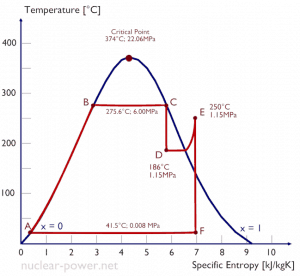
Thermodynamics is the science that deals with energy production, storage, transfer, and conversion. It studies the effects of work, heat, and energy on a system as a system undergoes a process from one equilibrium state to another and makes no reference to how long the process will take. But in engineering, we are often interested in the heat transfer rate, which is the topic of the science of heat transfer. We can recall from thermodynamics that energy exists in various forms.
Heat transfer is primarily interested in heat, the form of energy that can be transferred from one system to another due to temperature differences. The engineering thermodynamics might better be named thermostatics because it primarily describes the equilibrium states on either side of irreversible processes.
In engineering, the term convective heat transfer describes the combined effects of conduction and fluid flow. At this point, we have to add a new mechanism known as advection (the transport of a substance by bulk motion). From the thermodynamic point of view, heat flows into a fluid by diffusion to increase its energy, the fluid then transfers (advects) this increased internal energy (not heat) from one location to another, and this is then followed by a second thermal interaction which transfers heat to a second body or system, again by diffusion.
Heat Transfer
 Heat transfer is an engineering discipline that concerns the generation, use, conversion, and exchange of heat (thermal energy) between physical systems. In power engineering, it determines key parameters and materials of heat exchangers. Heat transfer is usually classified into various mechanisms, such as:
Heat transfer is an engineering discipline that concerns the generation, use, conversion, and exchange of heat (thermal energy) between physical systems. In power engineering, it determines key parameters and materials of heat exchangers. Heat transfer is usually classified into various mechanisms, such as:
- Heat Conduction. Heat conduction, also called diffusion, occurs within a body or between two bodies in contact. It is the direct microscopic exchange of kinetic energy of particles through the boundary between two systems. When an object is at a different temperature from another body or its surroundings
- Heat Convection. Heat convection depends on a mass motion from one region of space to another. Heat convection occurs when the bulk flow of a fluid (gas or liquid) carries heat along with the flow of matter in the fluid.
- Thermal Radiation. Radiation is heat transfer by electromagnetic radiation, such as sunshine, with no need for the matter to be present in the space between bodies.